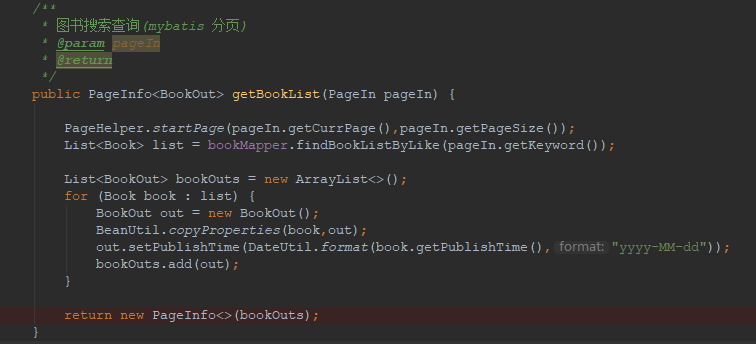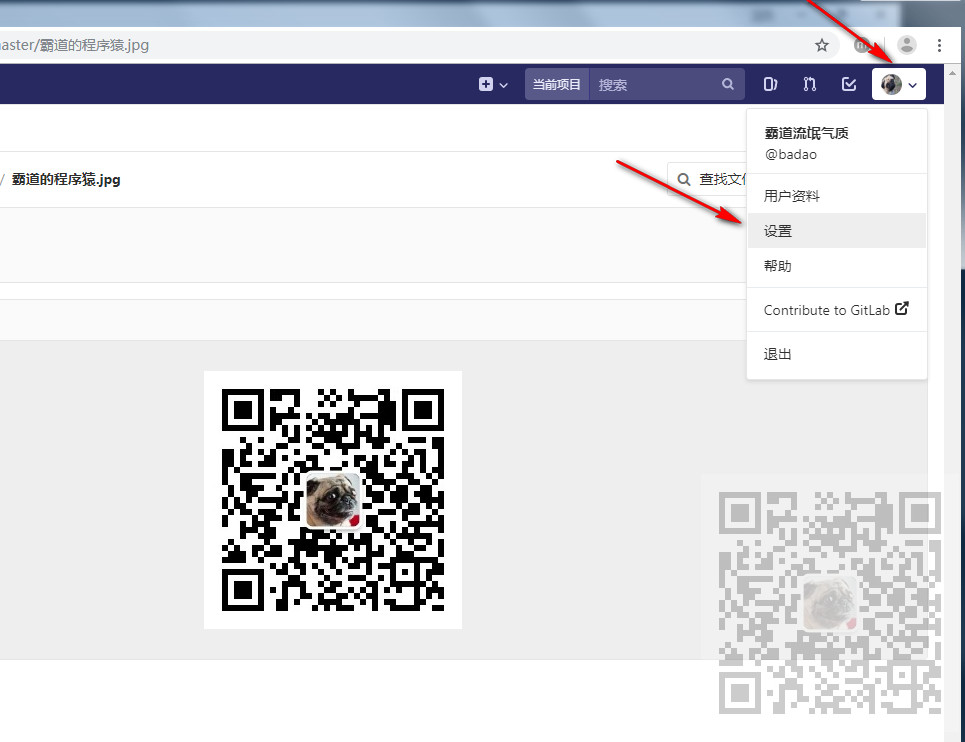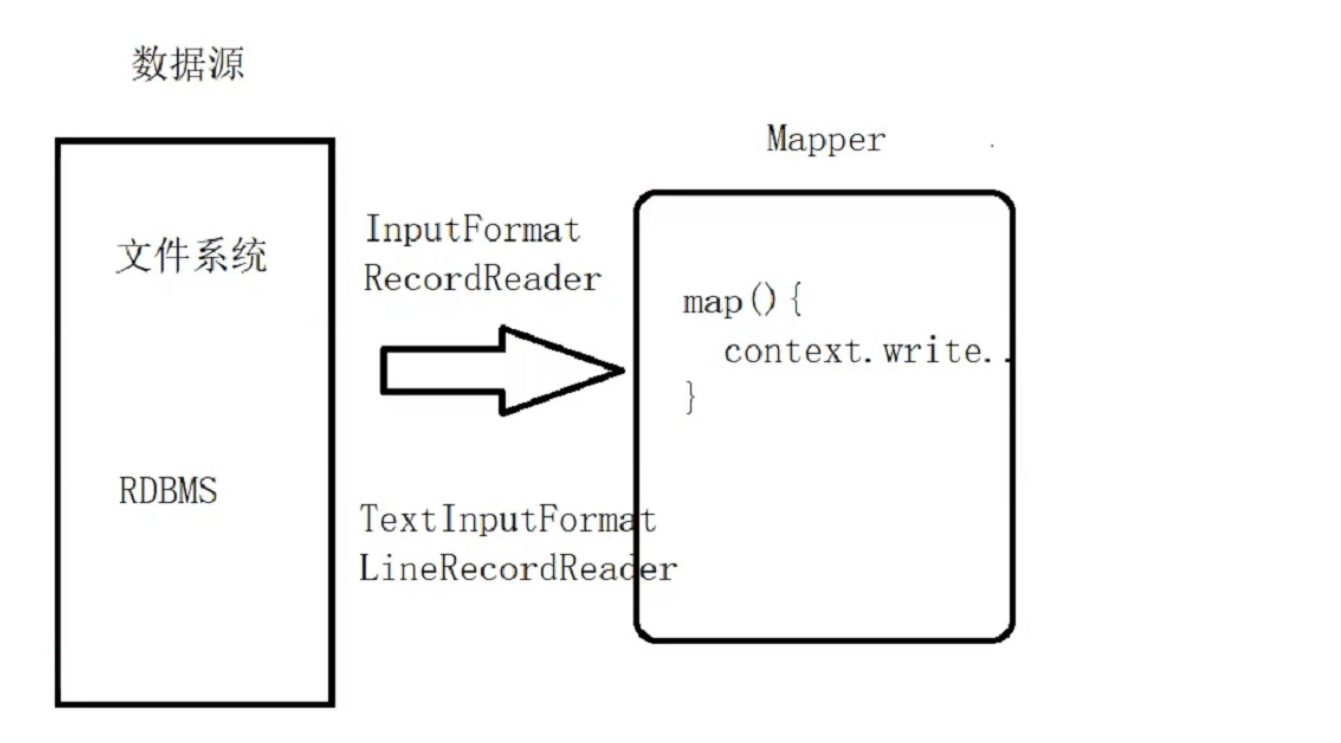Spark内核Shuffle流程及源码
Spark内核Shuffle流程及源码
目录
- Spark内核Shuffle流程及源码
- 一、Shuffle的原理和执行过程
- 二、HashShuffle解析
- 2.1 未优化的HashShuffle
- 2.2 优化后的HashShuffle
- 三、SortShuffle解析
- 3.1 SortShuffle
- 3.2 bypassShuffle
- 四、Shuffle写磁盘
- 4.1 shuffleWriterProcessor(写处理器)
- 4.2 使用BypassShuffle条件
- 4.3 使用SerializedShuffle条件
- 4.4 使用BaseShuffle
- 4.5 插入数据(缓存+溢写)
- 4.6 merge合并
- 4.7 写磁盘
- 五、Shuffle读取磁盘
Spark最初版本HashShuffle
Spark0.8.1版本以后优化后的HashShuffle
Spark1.1版本加入SortShuffle,默认是HashShuffle
Spark1.2版本默认是SortShuffle,但是可配置HashShuffle
Spark2.0版本删除HashShuffle只有SortShuffle
一、Shuffle的原理和执行过程
Shuffle一定会有落盘。
- 如果shuffle过程中落盘数据量减少,那么可以提高性能。
- 算子如果存在预聚合功能,可以提高shuffle的性能。

二、HashShuffle解析
2.1 未优化的HashShuffle

2.2 优化后的HashShuffle
优化的HashShuffle过程就是启用合并机制,合并机制就是复用buffer,开启合并机制的配置是spark.shuffle.consolidateFiles。该参数默认值为false,将其设置为true即可开启优化机制。通常来说,如果我们使用HashShuffleManager,那么都建议开启这个选项。
官网参数说明:http://spark.apache.org/docs/0.8.1/configuration.html
三、SortShuffle解析
3.1 SortShuffle

在该模式下,数据会先写入一个数据结构,reduceByKey写入Map,一边通过Map局部聚合,一边写入内存。Join算子写入ArrayList直接写入内存中。然后需要判断是否达到阈值,如果达到就会将内存数据结构的数据写入到磁盘,清空内存数据结构。
在溢写磁盘前,先根据key进行排序,排序过后的数据,会分批写入到磁盘文件中。默认批次为10000条,数据会以每批一万条写入到磁盘文件。写入磁盘文件通过缓冲区溢写的方式,每次溢写都会产生一个磁盘文件,也就是说一个Task过程会产生多个临时文件。
最后在每个Task中,将所有的临时文件合并,这就是merge过程,此过程将所有临时文件读取出来,一次写入到最终文件。意味着一个Task的所有数据都在这一个文件中。同时单独写一份索引文件,标识下游各个Task的数据在文件中的索引,start offset和end offset。
3.2 bypassShuffle
bypassShuffle和SortShuffle的区别就是不对数据排序。
bypass运行机制的触发条件如下:
1)shuffle reduce task数量小于等于spark.shuffle.sort.bypassMergeThreshold参数的值,默认为200。
2)不是聚合类的shuffle算子(比如reduceByKey不行)。
四、Shuffle写磁盘
4.1 shuffleWriterProcessor(写处理器)
DAGScheduler.scala
private def submitMissingTasks(stage: Stage, jobId: Int): Unit = {... ...val tasks: Seq[Task[_]] = try {val serializedTaskMetrics = closureSerializer.serialize(stage.latestInfo.taskMetrics).array()stage match {// shuffle写过程case stage: ShuffleMapStage =>stage.pendingPartitions.clear()partitionsToCompute.map { id =>val locs = taskIdToLocations(id)val part = partitions(id)stage.pendingPartitions += idnew ShuffleMapTask(stage.id, stage.latestInfo.attemptNumber,taskBinary, part, locs, properties, serializedTaskMetrics, Option(jobId),Option(sc.applicationId), sc.applicationAttemptId, stage.rdd.isBarrier())}// shuffle读过程case stage: ResultStage =>... ...}} catch {... ...}}
Task.scala
private[spark] abstract class Task[T](... ...) extends Serializable {final def run(... ...): T = {runTask(context)}}
Ctrl+h查找runTask 实现类ShuffleMapTask.scala
private[spark] class ShuffleMapTask(... ...)extends Task[MapStatus](... ...){override def runTask(context: TaskContext): MapStatus = {... ...dep.shuffleWriterProcessor.write(rdd, dep, mapId, context, partition)}}ShuffleWriteProcessor.scaladef write(... ...): MapStatus = {var writer: ShuffleWriter[Any, Any] = nulltry {val manager = SparkEnv.get.shuffleManagerwriter = manager.getWriter[Any, Any](dep.shuffleHandle,mapId,context,createMetricsReporter(context))writer.write(rdd.iterator(partition, context).asInstanceOf[Iterator[_ <: Product2[Any, Any]]])writer.stop(success = true).get} catch {... ...}}
查找(ctrl + h)ShuffleManager的实现类,SortShuffleManager
SortShuffleManager.scala
override def getWriter[K, V]( handle: ShuffleHandle,mapId: Long,context: TaskContext,metrics: ShuffleWriteMetricsReporter): ShuffleWriter[K, V] =... ...handle match {case unsafeShuffleHandle: SerializedShuffleHandle[K @unchecked, V @unchecked] =>new UnsafeShuffleWriter(... ...)case bypassMergeSortHandle: BypassMergeSortShuffleHandle[K @unchecked, V @unchecked] =>new BypassMergeSortShuffleWriter(... ...)case other: BaseShuffleHandle[K @unchecked, V @unchecked, _] =>new SortShuffleWriter(... ...)}}
因为getWriter的第一个输入参数是dep.shuffleHandle,点击dep.shuffleHandle
Dependency.scala
val shuffleHandle: ShuffleHandle = _rdd.context.env.shuffleManager.registerShuffle(shuffleId, this)
ShuffleManager.scala
def registerShuffle[K, V, C](shuffleId: Int, dependency: ShuffleDependency[K, V, C]): ShuffleHandle
4.2 使用BypassShuffle条件
BypassMergeSortShuffleHandle使用条件:
1)不能使用预聚合
2)如果下游的分区数量小于等于200(可配置)
| 处理器 | 写对象 | 判断条件 |
|---|---|---|
| SerializedShuffleHandle | UnsafeShuffleWriter | 1.序列化规则支持重定位操作(java序列化不支持,Kryo支持)2.不能使用预聚合 3.如果下游的分区数量小于或等于1677216 |
| BypassMergeSortShuffleHandle | BypassMergeSortShuffleWriter | 1.不能使用预聚合 2.如果下游的分区数量小于等于200(可配置) |
| BaseShuffleHandle | SortShuffleWriter | 其他情况 |
查找(ctrl + h)registerShuffle 实现类,SortShuffleManager.scala
override def registerShuffle[K, V, C](shuffleId: Int,dependency: ShuffleDependency[K, V, C]): ShuffleHandle = {//使用BypassShuffle条件:不能使用预聚合功能;默认下游分区数据不能大于200if (SortShuffleWriter.shouldBypassMergeSort(conf, dependency)) {new BypassMergeSortShuffleHandle[K, V](shuffleId, dependency.asInstanceOf[ShuffleDependency[K, V, V]])} else if (SortShuffleManager.canUseSerializedShuffle(dependency)) {new SerializedShuffleHandle[K, V](shuffleId, dependency.asInstanceOf[ShuffleDependency[K, V, V]])} else {new BaseShuffleHandle(shuffleId, dependency)}}
点击shouldBypassMergeSort
SortShuffleWriter.scala
private[spark] object SortShuffleWriter {def shouldBypassMergeSort(conf: SparkConf, dep: ShuffleDependency[_, _, _]): Boolean = {// 是否有map阶段预聚合(支持预聚合不能用)if (dep.mapSideCombine) {false} else {// SHUFFLE_SORT_BYPASS_MERGE_THRESHOLD = 200分区val bypassMergeThreshold: Int = conf.get(config.SHUFFLE_SORT_BYPASS_MERGE_THRESHOLD)// 如果下游分区器的数量,小于200(可配置),可以使用bypassdep.partitioner.numPartitions <= bypassMergeThreshold}}}
4.3 使用SerializedShuffle条件
SerializedShuffleHandle使用条件:
- 序列化规则支持重定位操作(java序列化不支持,Kryo支持)
- 不能使用预聚合
- 如果下游的分区数量小于或等于1677216
点击canUseSerializedShuffle
SortShuffleManager.scala
def canUseSerializedShuffle(dependency: ShuffleDependency[_, _, _]): Boolean = {val shufId = dependency.shuffleIdval numPartitions = dependency.partitioner.numPartitions// 是否支持将两个独立的序列化对象 重定位,聚合到一起// 1默认的java序列化不支持;Kryo序列化支持重定位(可以用)if (!dependency.serializer.supportsRelocationOfSerializedObjects) {false} else if (dependency.mapSideCombine) { // 2支持预聚合也不能用false} else if (numPartitions > MAX_SHUFFLE_OUTPUT_PARTITIONS_FOR_SERIALIZED_MODE) { //3如果下游分区的数量大于16777216,也不能用false} else {true}}
4.4 使用BaseShuffle
点击SortShuffleWriter
SortShuffleWriter.scala
override def write(records: Iterator[Product2[K, V]]): Unit = {// 判断是否有预聚合功能,支持会有aggregator和排序规则sorter = if (dep.mapSideCombine) {new ExternalSorter[K, V, C](context, dep.aggregator, Some(dep.partitioner), dep.keyOrdering, dep.serializer)} else {new ExternalSorter[K, V, V](context, aggregator = None, Some(dep.partitioner), ordering = None, dep.serializer)}// 插入数据sorter.insertAll(records)val mapOutputWriter = shuffleExecutorComponents.createMapOutputWriter(dep.shuffleId, mapId, dep.partitioner.numPartitions)// 插入数据sorter.writePartitionedMapOutput(dep.shuffleId, mapId, mapOutputWriter)val partitionLengths = mapOutputWriter.commitAllPartitions()mapStatus = MapStatus(blockManager.shuffleServerId, partitionLengths, mapId)}
4.5 插入数据(缓存+溢写)
ExternalSorter.scala
def insertAll(records: Iterator[Product2[K, V]]): Unit = {val shouldCombine = aggregator.isDefined// 判断是否支持预聚合,支持预聚合,采用map结构,不支持预聚合采用buffer结构if (shouldCombine) {val mergeValue = aggregator.get.mergeValueval createCombiner = aggregator.get.createCombinervar kv: Product2[K, V] = nullval update = (hadValue: Boolean, oldValue: C) => {if (hadValue) mergeValue(oldValue, kv._2) else createCombiner(kv._2)}while (records.hasNext) {addElementsRead()kv = records.next()// 如果支持预聚合,在map阶段聚合,将相同key,的value聚合map.changeValue((getPartition(kv._1), kv._1), update)// 是否能够溢写maybeSpillCollection(usingMap = true)}} else {while (records.hasNext) {addElementsRead()val kv = records.next()// 如果不支持预聚合,value不需要聚合 (key,(value1,value2))buffer.insert(getPartition(kv._1), kv._1, kv._2.asInstanceOf[C])maybeSpillCollection(usingMap = false)}}}private def maybeSpillCollection(usingMap: Boolean): Unit = {var estimatedSize = 0Lif (usingMap) {estimatedSize = map.estimateSize()if (maybeSpill(map, estimatedSize)) {map = new PartitionedAppendOnlyMap[K, C]}} else {estimatedSize = buffer.estimateSize()if (maybeSpill(buffer, estimatedSize)) {buffer = new PartitionedPairBuffer[K, C]}}if (estimatedSize > _peakMemoryUsedBytes) {_peakMemoryUsedBytes = estimatedSize}}
Spillable.scala
protected def maybeSpill(collection: C, currentMemory: Long): Boolean = {var shouldSpill = false// myMemoryThreshold默认值内存门槛是5mif (elementsRead % 32 == 0 && currentMemory >= myMemoryThreshold) {val amountToRequest = 2 * currentMemory - myMemoryThreshold// 申请内存val granted = acquireMemory(amountToRequest)myMemoryThreshold += granted// 当前内存大于(尝试申请的内存+门槛),就需要溢写了shouldSpill = currentMemory >= myMemoryThreshold}// 强制溢写 读取数据的值 超过了Int的最大值shouldSpill = shouldSpill || _elementsRead > numElementsForceSpillThresholdif (shouldSpill) {_spillCount += 1logSpillage(currentMemory)// 溢写spill(collection)_elementsRead = 0_memoryBytesSpilled += currentMemory// 释放内存releaseMemory()}shouldSpill}protected def spill(collection: C): Unit
查找(ctrl +h)spill 的实现类ExternalSorter
ExternalSorter.scalaoverride protected[this] def spill(collection: WritablePartitionedPairCollection[K, C]): Unit = {val inMemoryIterator = collection.destructiveSortedWritablePartitionedIterator(comparator)val spillFile = spillMemoryIteratorToDisk(inMemoryIterator)spills += spillFile}private[this] def spillMemoryIteratorToDisk(inMemoryIterator: WritablePartitionedIterator): SpilledFile = {// 创建临时文件val (blockId, file) = diskBlockManager.createTempShuffleBlock()var objectsWritten: Long = 0val spillMetrics: ShuffleWriteMetrics = new ShuffleWriteMetrics// 溢写文件前,fileBufferSize缓冲区大小默认32mval writer: DiskBlockObjectWriter =blockManager.getDiskWriter(blockId, file, serInstance, fileBufferSize, spillMetrics)… …SpilledFile(file, blockId, batchSizes.toArray, elementsPerPartition)}
4.6 merge合并
来到SortShuffleWriter.scala
override def write(records: Iterator[Product2[K, V]]): Unit = {sorter = if (dep.mapSideCombine) {new ExternalSorter[K, V, C](context, dep.aggregator, Some(dep.partitioner), dep.keyOrdering, dep.serializer)} else {new ExternalSorter[K, V, V](context, aggregator = None, Some(dep.partitioner), ordering = None, dep.serializer)}sorter.insertAll(records)val mapOutputWriter = shuffleExecutorComponents.createMapOutputWriter(dep.shuffleId, mapId, dep.partitioner.numPartitions)// 合并sorter.writePartitionedMapOutput(dep.shuffleId, mapId, mapOutputWriter)val partitionLengths = mapOutputWriter.commitAllPartitions()mapStatus = MapStatus(blockManager.shuffleServerId, partitionLengths, mapId)}
ExternalSorter.scala
def writePartitionedMapOutput(shuffleId: Int,mapId: Long,mapOutputWriter: ShuffleMapOutputWriter): Unit = {var nextPartitionId = 0// 如果溢写文件为空,只对内存中数据处理if (spills.isEmpty) {// Case where we only have in-memory data... ...} else {// We must perform merge-sort; get an iterator by partition and write everything directly.//如果溢写文件不为空,需要将多个溢写文件合并for ((id, elements) <- this.partitionedIterator) {val blockId = ShuffleBlockId(shuffleId, mapId, id)var partitionWriter: ShufflePartitionWriter = nullvar partitionPairsWriter: ShufflePartitionPairsWriter = null… …} {if (partitionPairsWriter != null) {partitionPairsWriter.close()}}nextPartitionId = id + 1}}… …}def partitionedIterator: Iterator[(Int, Iterator[Product2[K, C]])] = {val usingMap = aggregator.isDefinedval collection: WritablePartitionedPairCollection[K, C] = if (usingMap) map else bufferif (spills.isEmpty) {if (ordering.isEmpty) {groupByPartition(destructiveIterator(collection.partitionedDestructiveSortedIterator(None)))} else {groupByPartition(destructiveIterator(collection.partitionedDestructiveSortedIterator(Some(keyComparator))))}} else {// 合并溢写文件和内存中数据merge(spills, destructiveIterator(collection.partitionedDestructiveSortedIterator(comparator)))}}private def merge(spills: Seq[SpilledFile], inMemory: Iterator[((Int, K), C)]): Iterator[(Int, Iterator[Product2[K, C]])] = {val readers = spills.map(new SpillReader(_))val inMemBuffered = inMemory.buffered(0 until numPartitions).iterator.map { p =>val inMemIterator = new IteratorForPartition(p, inMemBuffered)val iterators = readers.map(_.readNextPartition()) ++ Seq(inMemIterator)if (aggregator.isDefined) {(p, mergeWithAggregation(iterators, aggregator.get.mergeCombiners, keyComparator, ordering.isDefined))} else if (ordering.isDefined) {// 归并排序(p, mergeSort(iterators, ordering.get))} else {(p, iterators.iterator.flatten)}}}
4.7 写磁盘
来到SortShuffleWriter.scala
override def write(records: Iterator[Product2[K, V]]): Unit = {sorter = if (dep.mapSideCombine) {new ExternalSorter[K, V, C](context, dep.aggregator, Some(dep.partitioner), dep.keyOrdering, dep.serializer)} else {new ExternalSorter[K, V, V](context, aggregator = None, Some(dep.partitioner), ordering = None, dep.serializer)}sorter.insertAll(records)val mapOutputWriter = shuffleExecutorComponents.createMapOutputWriter(dep.shuffleId, mapId, dep.partitioner.numPartitions)// 合并sorter.writePartitionedMapOutput(dep.shuffleId, mapId, mapOutputWriter)// 写磁盘val partitionLengths = mapOutputWriter.commitAllPartitions()mapStatus = MapStatus(blockManager.shuffleServerId, partitionLengths, mapId)}
查找(ctrl + h)commitAllPartitions实现类,来到LocalDiskShuffleMapOutputWriter.java
public long[] commitAllPartitions() throws IOException {if (outputFileChannel != null && outputFileChannel.position() != bytesWrittenToMergedFile) {... ...}cleanUp();File resolvedTmp = outputTempFile != null && outputTempFile.isFile() ? outputTempFile : null;blockResolver.writeIndexFileAndCommit(shuffleId, mapId, partitionLengths, resolvedTmp);return partitionLengths;}IndexShuffleBlockResolver.scaladef writeIndexFileAndCommit(shuffleId: Int,mapId: Long,lengths: Array[Long],dataTmp: File): Unit = {val indexFile = getIndexFile(shuffleId, mapId)val indexTmp = Utils.tempFileWith(indexFile)try {val dataFile = getDataFile(shuffleId, mapId)synchronized {val existingLengths = checkIndexAndDataFile(indexFile, dataFile, lengths.length)if (existingLengths != null) {System.arraycopy(existingLengths, 0, lengths, 0, lengths.length)if (dataTmp != null && dataTmp.exists()) {dataTmp.delete()}} else {val out = new DataOutputStream(new BufferedOutputStream(new FileOutputStream(indexTmp)))Utils.tryWithSafeFinally {var offset = 0Lout.writeLong(offset)for (length <- lengths) {offset += lengthout.writeLong(offset)}} {out.close()}if (indexFile.exists()) {indexFile.delete()}if (dataFile.exists()) {dataFile.delete()}if (!indexTmp.renameTo(indexFile)) {throw new IOException("fail to rename file " + indexTmp + " to " + indexFile)}if (dataTmp != null && dataTmp.exists() && !dataTmp.renameTo(dataFile)) {throw new IOException("fail to rename file " + dataTmp + " to " + dataFile)}}}} finally {... ...}}
五、Shuffle读取磁盘
DAGScheduler.scala
private def submitMissingTasks(stage: Stage, jobId: Int): Unit = {... ...val tasks: Seq[Task[_]] = try {val serializedTaskMetrics = closureSerializer.serialize(stage.latestInfo.taskMetrics).array()stage match {case stage: ShuffleMapStage =>... ...case stage: ResultStage =>partitionsToCompute.map { id =>val p: Int = stage.partitions(id)val part = partitions(p)val locs = taskIdToLocations(id)new ResultTask(stage.id, stage.latestInfo.attemptNumber,taskBinary, part, locs, id, properties, serializedTaskMetrics,Option(jobId), Option(sc.applicationId), sc.applicationAttemptId,stage.rdd.isBarrier())}}} catch {... ...}}
ResultTask.scala
private[spark] class ResultTask[T, U](... ...)extends Task[U](... ...)with Serializable {override def runTask(context: TaskContext): U = {func(context, rdd.iterator(partition, context))}}
RDD.scala
final def iterator(split: Partition, context: TaskContext): Iterator[T] = {if (storageLevel != StorageLevel.NONE) {getOrCompute(split, context)} else {computeOrReadCheckpoint(split, context)}}private[spark] def getOrCompute(partition: Partition, context: TaskContext): Iterator[T] = {... ...computeOrReadCheckpoint(partition, context)... ...}def computeOrReadCheckpoint(split: Partition, context: TaskContext): Iterator[T] ={if (isCheckpointedAndMaterialized) {firstParent[T].iterator(split, context)} else {compute(split, context)}}def compute(split: Partition, context: TaskContext): Iterator[T]
全局查找compute,由于我们是ShuffledRDD,所以点击ShuffledRDD.scala,搜索compute
override def compute(split: Partition, context: TaskContext): Iterator[(K, C)] = {val dep = dependencies.head.asInstanceOf[ShuffleDependency[K, V, C]]val metrics = context.taskMetrics().createTempShuffleReadMetrics()SparkEnv.get.shuffleManager.getReader(dep.shuffleHandle, split.index, split.index + 1, context, metrics).read().asInstanceOf[Iterator[(K, C)]]}
ShuffleManager.scala文件
def getReader[K, C](... ...): ShuffleReader[K, C]
查找(ctrl + h)getReader 的实现类,SortShuffleManager.scala
override def getReader[K, C](... ...): ShuffleReader[K, C] = {val blocksByAddress = SparkEnv.get.mapOutputTracker.getMapSizesByExecutorId(handle.shuffleId, startPartition, endPartition)new BlockStoreShuffleReader(handle.asInstanceOf[BaseShuffleHandle[K, _, C]], blocksByAddress, context, metrics,shouldBatchFetch = canUseBatchFetch(startPartition, endPartition, context))}
在BlockStoreShuffleReader.scala文件中查找read方法
override def read(): Iterator[Product2[K, C]] = {val wrappedStreams = new ShuffleBlockFetcherIterator(... ...// 读缓冲区大小 默认 48mSparkEnv.get.conf.get(config.REDUCER_MAX_SIZE_IN_FLIGHT) * 1024 * 1024,SparkEnv.get.conf.get(config.REDUCER_MAX_REQS_IN_FLIGHT),... ...}



































还没有评论,来说两句吧...